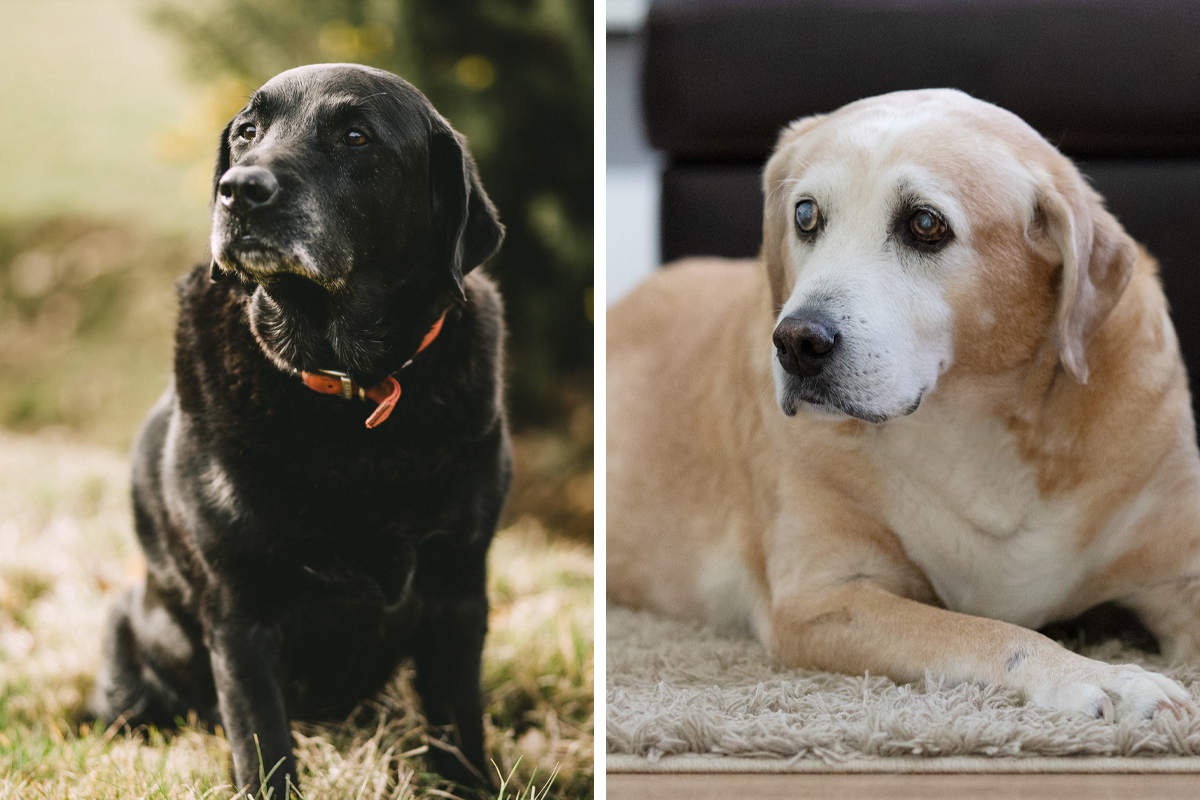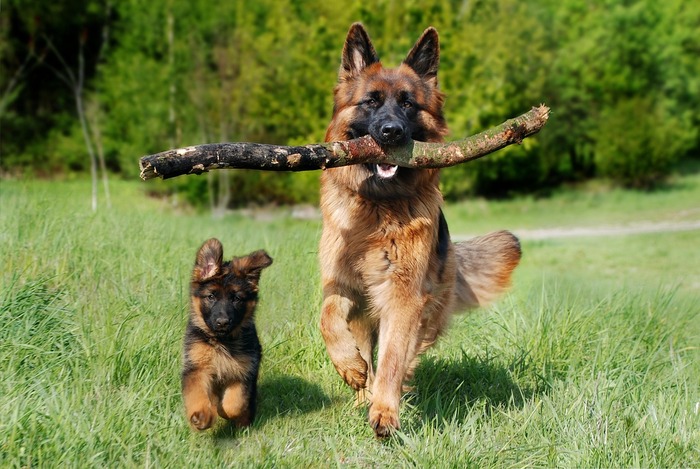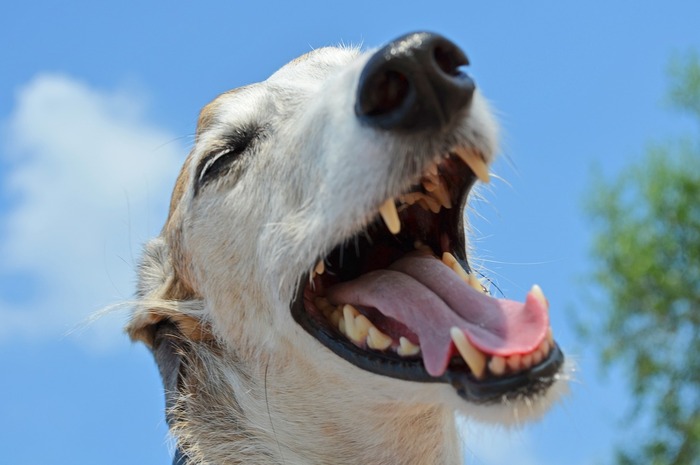As pet parents, we often wonder about our beloved dog’s age. While some may have a clear idea of their pet’s age, you might find yourself asking “How old is my dog”?
Here, we will discuss various ways to tell your dog’s age.
The information provided herein is for informational purposes only. Please refer to our disclaimer for more details..
- How to classify dog age
- Ways to tell how old a dog is: Physical Characteristics
- Ways to tell how old a dog is: Behavioral Characteristics
- How old is your dog: Breed Considerations
- Dog’s age chart: Comparing dog years to human years.
- Factors influencing dog age assessment.
- Conclusion: What is your dog’s age
- Frequently asked questions
How to classify dog age
Image credits: Pixabay
The age of a dog can be divided into five stages. These are puppyhood, adolescence, adulthood, senior, and geriatric years. How fast dogs get old depends on their breed, size, and health.
- Dogs age in stages: puppyhood, adolescence, adulthood, senior, geriatric.
- Teeth condition helps estimate a dog's age, more precise in puppies.
- Physical signs like coat and muscle tone indicate age in dogs.
- Behavior changes like appetite and sociability hint at a dog's age.
- Breed-specific lifespan charts can aid in estimating dog's age.
Size and breed play a big role in a dog’s aging process. According to WebMD, smaller dogs tend to live longer than larger ones, but they mature quicker in the first few years.
The table below will help dog owners have a general overview of this classification:
| Stage
| Average dog age
| Characteristics
|
| Puppyhood
| 0-12 months
| Puppies are in the early stage of growth, playful, and full of energy.
|
| Adolescence
| 12-18 months
| Increased independence, body sensitivity, and sexual maturity
|
| Adulthood
| 2-6 years
| Adult dogs are fully grown with well-developed personalities. Energy levels stabilize, and they exhibit a balanced mix of playfulness and maturity.
|
| Senior years
| 7-9 years
| Graying fur, reduced energy levels, and aging signs become noticeable.
|
| Geriatric years | 9+ years | Decreased mobility, increased sensitivity, and a higher likelihood of age-related health concerns. |
Ways to tell how old a dog is: Physical Characteristics
Examining physical characteristics is a great way to estimate your dog’s age. For example, looking at their teeth can tell you how old your dog is. Additionally, the condition of the dog’s eyes, coat, and body shape can tell us a dog’s approximate age. These attributes include:
Teeth
Image credits: Pixabay
The teeth are a great way to estimate a dog’s age. In adult dogs, teeth will give you a rough age estimate. In younger dogs, it is a more accurate method because puppies shed their deciduous teeth at six months old.
Puppies have sharp baby teeth that are replaced by adult teeth as they grow older. Over time, adult teeth show signs of wear and tear, providing a visual cue to their age.
Here are the steps in determining age by checking your dog’s teeth:
- Check for puppy teeth, adult teeth, or a mix.
- Count the teeth; 28 in place indicates 8 weeks old to 3 months.
- Look for permanent incisors; visible ones suggest around 4 months.
- Note the canines. If not visible, the dog is 6 months or less.
- Confirm the presence of all adult teeth; most of 42 means 5 to 7 months.
- Examine tooth color and wear. Dull with yellow tartar indicates 1 to 2 years, while heavy wear, missing teeth, and much tartar imply an age of around 10 to 15 years.
Coat Condition
You can tell a dog’s age by looking at its coat. Puppies usually have soft shiny fur while aging dogs have dull greying coats. Older dogs also show changes in texture, color, or thickness.
Muscle Tone and Skin Elasticity
As dogs grow older, their muscles and skin change. In pups, adolescents, and adults, there is a well-defined firm muscle tone. Yet, as they become seniors, there is a gradual loss in muscle tone and mass. As dogs age, their muscle cells may become less efficient in repairing muscle tissue, leading to a gradual reduction in mass.
Skin Elasticity
In young dogs, the skin is elastic, meaning it quickly returns to its normal position when gently pulled from the body. If a dog is older, you will see poor skin elasticity, particularly in areas prone to sagging, such as the neck or abdomen.
Paws
A dog’s paw pads can give a picture of their age, but it is not as reliable as the other indicators above.
In general, puppies have smaller smoother paws. On the other hand (pun intended), older dogs have rougher pads because of years of physical activity.
Ways to tell how old a dog is: Behavioral Characteristics
A dog’s behavior can change as they age. Younger dogs tend to be more playful, while older dogs may slow down and show signs of aging. Paying attention to their energy levels and overall behavior can help you determine their age.
Appetite
Image credits: Pixabay
Puppies are enthusiastic eaters, while adolescents might show moderation or continue their hearty appetites. However, as a dog gets older, its appetite decreases due to lower activity levels and sometimes, dental issues.
Remember, each dog’s appetite is unique, and abrupt changes could be signs of health issues, so reach out to your vet if you notice abrupt changes in appetite. A good appetite is essential in keeping your dog healthy and happy!
Social Interaction
Usually, you can guess a dog’s age from his interactions with people. Puppies are usually happy-go-lucky and make friends with people easily. On the other hand, adolescents and adult dogs are more selective in their social interactions.
According to Pet Coach, senior dogs may show behavioral changes such as separation anxiety, noise phobia, increased vocalization, and cognitive dysfunction. Yet, these are general trends, and individual dogs may vary.
Sleep patterns
Sleep patterns in dogs can vary significantly depending on how old the dog is. Puppies sleep more and have longer naps, while most adult dogs need around an average of 11 hours. Older dogs nap more frequently during the day and have fewer interruptions at night.
Hearing
Dogs’ hearing abilities change as they get older. Little pups usually can pick up on high-pitched sounds. When they become adults, their hearing usually stays pretty good. But when they reach their golden years, dogs might have trouble hearing, especially high-frequency noise.
This hearing loss usually happens gradually. If your dog has trouble hearing, you may notice him becoming less responsive to your cues and familiar sounds. Older dogs may also sleep more soundly because of this. Consider this when caring for your senior dog.
How old is your dog: Breed Considerations
Understanding the typical aging process of different dog breeds can help you in knowing their age. Some breeds like the Golden Retriever and Bulldog, tend to age more slowly than others.
Here’s a table showing you how some common breeds age and what to expect in terms of their lifespan and life stages.
| Dog breed | Average lifespan in years | Age Classification | |
| Labrador Retriever | 10-12 | Puppy: 0-2 years Adult: 3-6 years Senior: 7+ years | |
| German Shepherd | 9-13 | Puppy: 0-2 years Adult: 3-6 years Senior: 7+ years | |
| Golden Retriever | 10-12 | Puppy: 0-2 years Adult: 3-6 years Senior: 7+ years | |
| Bulldog | 8-10 | Puppy: 0-1 year Adult: 2-6 years Senior: 7+ year | |
| Poodle | 12-15 | Puppy: 0-2 years Adult: 3-7 years Senior: 8+ years |
Dog’s age chart: Comparing dog years to human years.
One popular method to estimate a dog’s age in human years. It is believed that one dog year is equivalent to seven human years. However, this is a rough estimate, and the conversion varies based on the size and breed of the dog.
Smaller breeds usually have longer lifespans and mature slower, so the one-year to seven-year ratio is not accurate for them. On the other hand, larger breeds tend to have shorter lifespans and mature faster, so the ratio may be closer to one year to six or even five years for them.
Overall, with this method, it is impossible to tell your pet’s true age. It is always best to consult with a veterinarian for a more accurate assessment of a dog’s age based on the factors listed above.
Factors influencing dog age assessment.
While there are various methods to estimate a dog’s age, it is important to note that these are not always accurate. Several factors can influence age assessment, including the dog’s genetics and lifestyle. Therefore, it is essential to consider these factors when determining your dog’s age.
Conclusion: What is your dog’s age
Knowing how old your dog is can be challenging, but by observing various physical and behavioral characteristics, you can get a rough estimate of their age. Consulting with a veterinarian can provide a more accurate age assessment and help ensure your dog receives appropriate care as it gets older.
Frequently asked questions
At what age do dogs start slowing down?
Dogs generally start slowing down as they reach their senior years. Dogs are considered seniors at around 7 to 10 years of age. However, this can vary depending on the size and breed of the dog.
What are 5 ways to tell a dog’s age at the vet?
A visit to the veterinarian can help you in knowing your dog’s age. Veterinarians can calculate how old your dog is by using:
- Physical examination of coat and eyes
- Dental examination
- Joint and mobility assessment
- Diagnostic tests
- Age chart
How do you read a dog’s age chart?
To read a dog’s age chart, you need to be sure how old your dog is in years and find the corresponding human years. However, it is important to remember that the dog’s age chart is not a true age calculator and cannot tell you his exact age in human years.
547views
Share on FacebookWe have a 16 year old, and watching her age is both wonderful and heartbreaking.
May you still have LOTS of good, quality time left with her! <3 My true love heart-dog, my German Shepherd Ember, only made it to 12. She died in 2010 and I still miss her. But they never leave us entirely :)
Load More Replies...We have a 16 year old, and watching her age is both wonderful and heartbreaking.
May you still have LOTS of good, quality time left with her! <3 My true love heart-dog, my German Shepherd Ember, only made it to 12. She died in 2010 and I still miss her. But they never leave us entirely :)
Load More Replies...






15
7